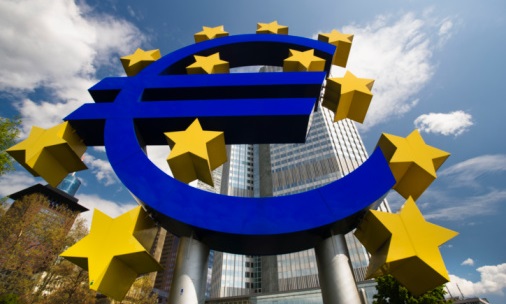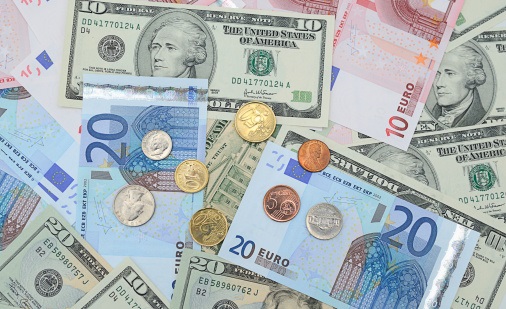The ECB just released their latest monetary policy decision. The bank left its policy settings unchanged, with the deposit rate left at -0.5% and policy guidance regarding the banks two flagship QE programmes (the PEPP and AP), as well as its refinancing operations (the TELTROs and PELTROs) also left unchanged. No new economic projections were released. Despite the fact that the ECB did not release an updated view on the economy (usually the meetings when this is done are considered more important as the bank can combine a new more hawkish/dovish view on the economy with a new policy change/change in policy guidance), this meeting was considered to be more important than usual. That’s because the ECB recently unveiled a change to its inflation target as part of its now concluded policy review, saying it would now target inflation symmetrically around 2.0% rather than its previous aim for inflation to be “close to, but just below, 2.0%”. Market participants were interested as to how the ECB would update its statement on monetary policy to include this latest tweak to its policy mandate and whether the bank would change its policy guidance with regards to QE and interest rates. The latest statement notes that the governing council will now keep the key lending rate at present or lower levels until it sees inflation reaching 2.0% well ahead of the end of its projection horizon and durably over the rest of its projections. Moreover, the bank wants to see actual inflation rise to 2.0%, rather than just inflation projections/expectations, before raising interest rates. This was very much in line with expectations. Elsewhere, there was no new guidance on the transition away from the bank’s emergency PEPP (QE) programme, which is scheduled to end in March 2022, as Lagarde had previously hinted there might be. No doubt, Lagarde will be questioned on this during the press conference which starts from 1330BST, an event which market participants will be watching keenly.
Those hoping for volatility were disappointed; EURUSD is a tad lower in wake of the meeting, now down about 0.1% close to 1.1775, having failed to break meaningfully above 1.1800 earlier in the session. Elsewhere, European equities hold onto decent gains on the session (Stoxx 600 +0.9%), but this does not have much to do with the ECB. Rather, European equities are tracking gains seen in their US and global counterparts as the recovery from the dip seen earlier in the week continues. S&P 500 futures this morning are roughly flat, but the index made decent gains yesterday of about 0.8%, building on the 1.4% gain seen on Tuesday. With futures currently trading around 4360, the index is likely to open cash trade about 0.7% below record highs, with equity investors remaining largely bullish on 1) the outlook for the global economic recovery despite the recent surge in global Covid-19 infections, likely due to continued evidence of high efficacy of the vaccines being rolled out globally and 2) expectations that financial conditions are set to remain very accommodative for the most part in the coming years (i.e. bond yields to remain historically low and central bank to maintain historically low interest rates). Meanwhile, price action in global bond markets has been subdued in wake of the ECB’s rate decision and new statement. Eurozone yields are for the most part a little lower, as bond market analysts continue to argue that the ECB’s new inflation target and resultant dovish shift in policy limits any potential upside. US yields, meanwhile, are modestly higher as traders await the latest weekly US jobless claims report for more evidence of US labour market recovery. 10-year yields are currently just under 1.30%, having failed to break above the level earlier in the session, but remaining well above lows set earlier in the week of close to 1.12%.
Turning now to commodities; yesterday saw a blistering rally in crude oil prices, with front-month WTI futures rallying nearly 6.0% from under $66.50 to above the $70.00. Crude prices were at the time playing catch up to global equities, which had already managed to recover most of the losses incurred back on Monday. Prices continue to advance this morning, with WTI now back above the $71.00 handle, aided as a number of investment banks/institutions reaffirm their bullish forecasts for crude oil prices in the coming quarters and the widely held view that the oil market will be in deficit throughout the rest of this year (i.e. meaning that daily consumption will be higher than daily production, meaning a draw down on inventories). Barclay’s bank even warned than WTI could exceed $100 per barrel is OPEC+ is too slow in raising output to meet demand. Crude oil prices thus seem to have largely shrugged off any disappointment about the surprise rise in US crude oil inventories this week (revealed in the weekly EIA crude oil inventory report yesterday). Gold prices, meanwhile, have not blinked at the ECB, which is unsurprising given they normally take their cue more from US markets (i.e. US bond yields and the US dollar) rather than global markets. Spot gold continues to trade within a few dollars of the $1800 level.
Speaking of the US dollar; with the ECB not providing any excitement to markets (yet), the Dollar Index (DXY) continues to trade flat on the session around 92.80, about 40 points below recent highs around 93.20. The buck has faded in the last few days from these levels given the improvement in risk appetite, but the move higher in US yields from earlier week lows seems to have given it some support. Meanwhile, AUD, GBP and NOK are all outperforming. GBPUSD has bounced from the 1.3700 level overnight and now moved back above 1.3750, up around 0.4% on the day, while AUDUSD bounced at 0.7340 overnight and now resides around 0.7375, up about 0.3% on the day and up more than 1.0% from lows set earlier in the week. Relative outperformance in sterling comes despite broadly dovish remarks from BoE PMC Member Broadbent with regards to the outlook for UK inflation; for reference, though Broadbent acknowledged his surprise at the extent of the increase in inflation, he noted that he is not convinced elevated inflation will last over the next 18-24 months, a timeline for inflation which he said is much more relevant to monetary policy. Moreover, he said that a lot of the current rise in inflation is as a result of higher oil prices, an effect he does not expect to persist into 2022. Finally, Broadbent added that he disagrees with fellow MPC members Saunders (who has a more hawkish outlook for UK inflation) and expects that deflationary forces will be stronger than inflationary forces in two years’ time. Given his more dovish view on inflation, it makes sense to assume that Broadbent also holds a more dovish view on what constitutes appropriate monetary policy over the next two years (perhaps he thinks there should be no rate hikes for at least two years). Meanwhile, the Aussie seems to be deriving some support from a decent NAB Quarterly Business Survey (which fell a little to 17 from 19 in Q2, but remains at historically elevated levels), as well as good preliminary trade numbers which showed both exports and importing posting 8.0% MoM gains in the month of June. In terms of the rest of the G10; the yen is subdued and flat on the day, and this is likely to remain the case with Japanese market participants away for the rest of the week for public holidays.
The Day Ahead
ECB President Lagarde speaks in the post-rate decision press conference from 1330BST and this ought to be watched for any market moving remarks on the ECB’s plans for QE. Otherwise, US weekly jobless claims numbers, also at 1330BST and US Existing Home sales numbers for the month of June and preliminary Eurozone Consumer Confidence data, both out at 1500BST, are also worth watching.




